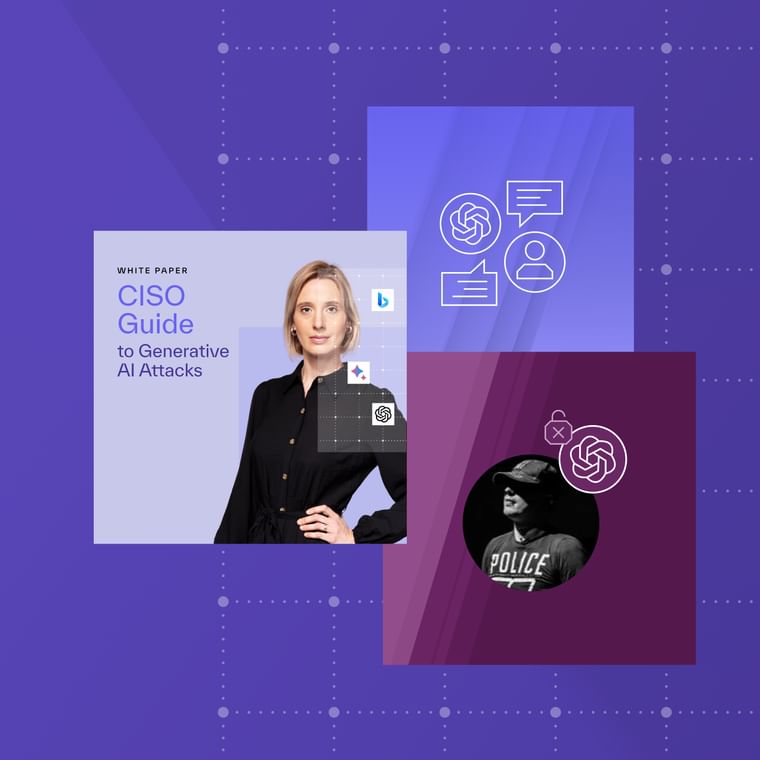What is AI TRiSM? What It Means and Why It Matters
AI TRiSM is an acronym coined by Gartner that refers to a framework for how organizations should identify and mitigate risks surrounding reliability, security, and trust within AI models and applications. AI TRiSM stands for trust, risk, security management.
As real-world use cases for AI increase, organizations are adopting it at a rapid pace for various functions. But governance, particularly around security and privacy, remains a concern.
Learn about the pillars of the AI TRiSM framework, why they matter, how it works, why it's important, and how to implement it.
The Pillars and Principles of AI TRiSM
According to Gartner, the four pillars of AI TRiSM are:
- Explainability and model monitoring: how an AI model processes information and makes decisions.
- ModelOps: how an AI model is continuously refined, tested, and updated after being deployed.
- AI AppSec: how AI applications and their data is secured.
- Privacy: how an AI model adheres to data governance practices.
The principles behind the acronym:
Trust refers to the confidence and reliability in an AI system's performance and outcomes. It encompasses ethical considerations, transparency, and fairness in decision-making.
Risk involves identifying potential threats to an AI system's performance, security, and privacy. This includes understanding the limitations and vulnerabilities of the technology being used.
Security management focuses on safeguarding data and systems from unauthorized access, manipulation, or misuse.
Why Does AI TRiSM Matter?
The rise of AI has brought about a host of benefits such as efficiency, automation, and better decision-making. However, it also presents new risks and challenges that organizations must address.
People and organizations are using AI en masse, but may struggle to articulate how the model works, what data it uses, and what potential biases it may have. Third-party AI tools are rife with data and privacy concerns, factual errors, and the potential for abuse like generative AI attacks.
Without risk management, monitoring, and controls, AI models may not be reliable, trustworthy, or secure. As governments and regulatory bodies create laws around AI, an AI TRiSM framework can improve AI results.
Examples of AI TRiSM in Action:
Facial Recognition Technology: With facial recognition technology becoming increasingly popular for authentication purposes, trust is a critical factor that needs to be addressed. Organizations need to ensure that their algorithms are unbiased and accurate.
Autonomous Vehicles: As self-driving cars become a reality in the transportation industry, there are many safety concerns surrounding their use. Implementing AI TRiSM principles can help identify potential risks such as cyber-attacks or malfunctions.
Fraud Detection: Many financial institutions use AI algorithms for fraud detection; however, this raises concerns about privacy violations if customer data is not adequately protected.
Dataset Accuracy and Privacy: Many AI models rely on enormous datasets that may contain sensitive information. Implementing AI TRiSM can safeguard data and ensure accuracy.
Implementing AI TRiSM Principles
To effectively implement AI TRiSM principles within an organization, Gartner recommends following these steps:
Understand your organization's objectives and values: This is crucial in determining the ethical considerations and potential risks associated with implementing AI.
Assess your AI systems: Conduct a thorough assessment of the AI systems being used, including their capabilities and limitations. Identify any potential risks related to trust, security, or privacy.
Develop governance policies: Establish governance policies that address trust, risk, and security management specific to your organization's needs.
Monitor and review regularly: Regularly monitor and review the effectiveness of your governance policies to identify any shortcomings or new risks that may arise.
AI TRiSM For the Future
The application of artificial intelligence is only going to increase, making it imperative for organizations to have a structured approach towards managing its risks.
By implementing the AI TRiSM framework, organizations can build trust in their AI systems, mitigate potential risks, and ensure security and privacy for both themselves and their customers. CISOs should champion AI TRiSM adoption.





